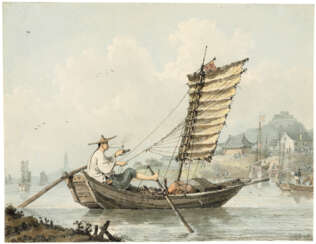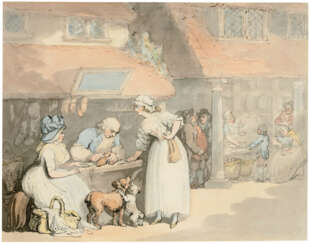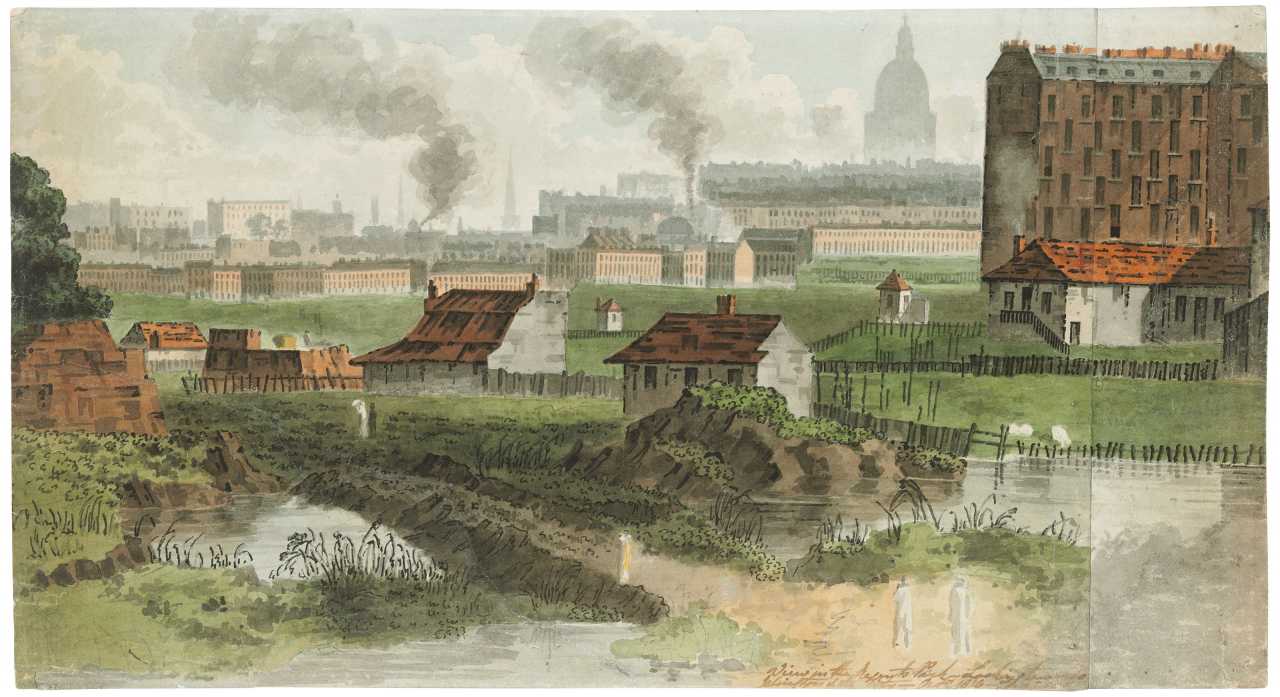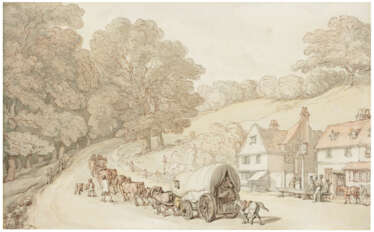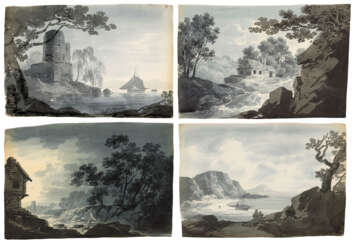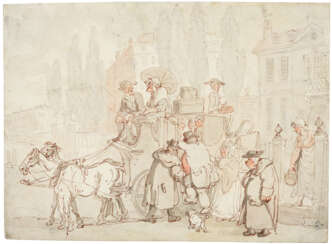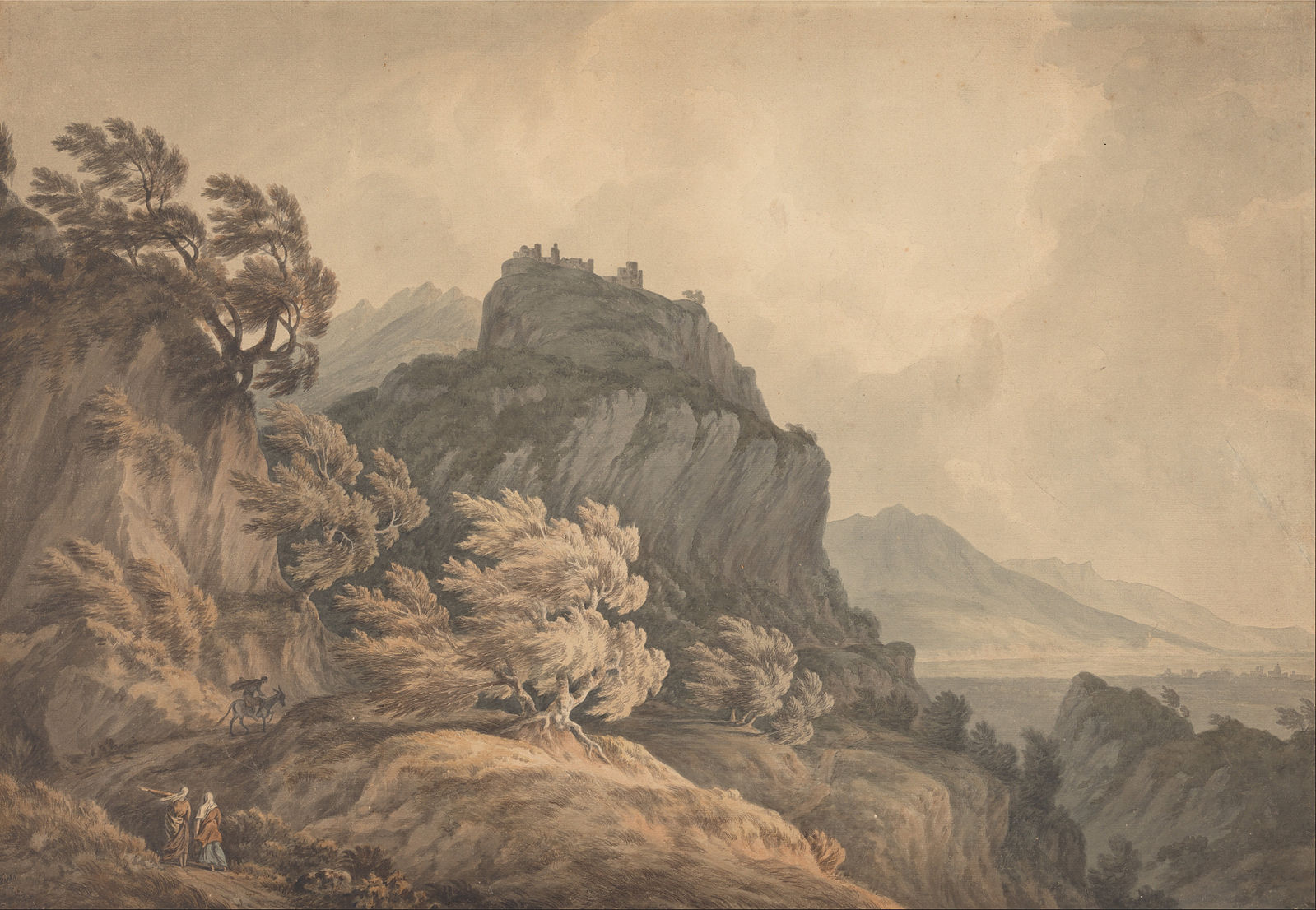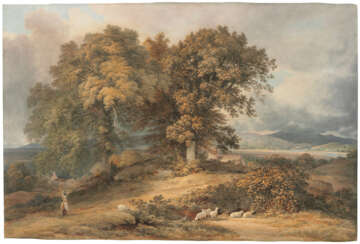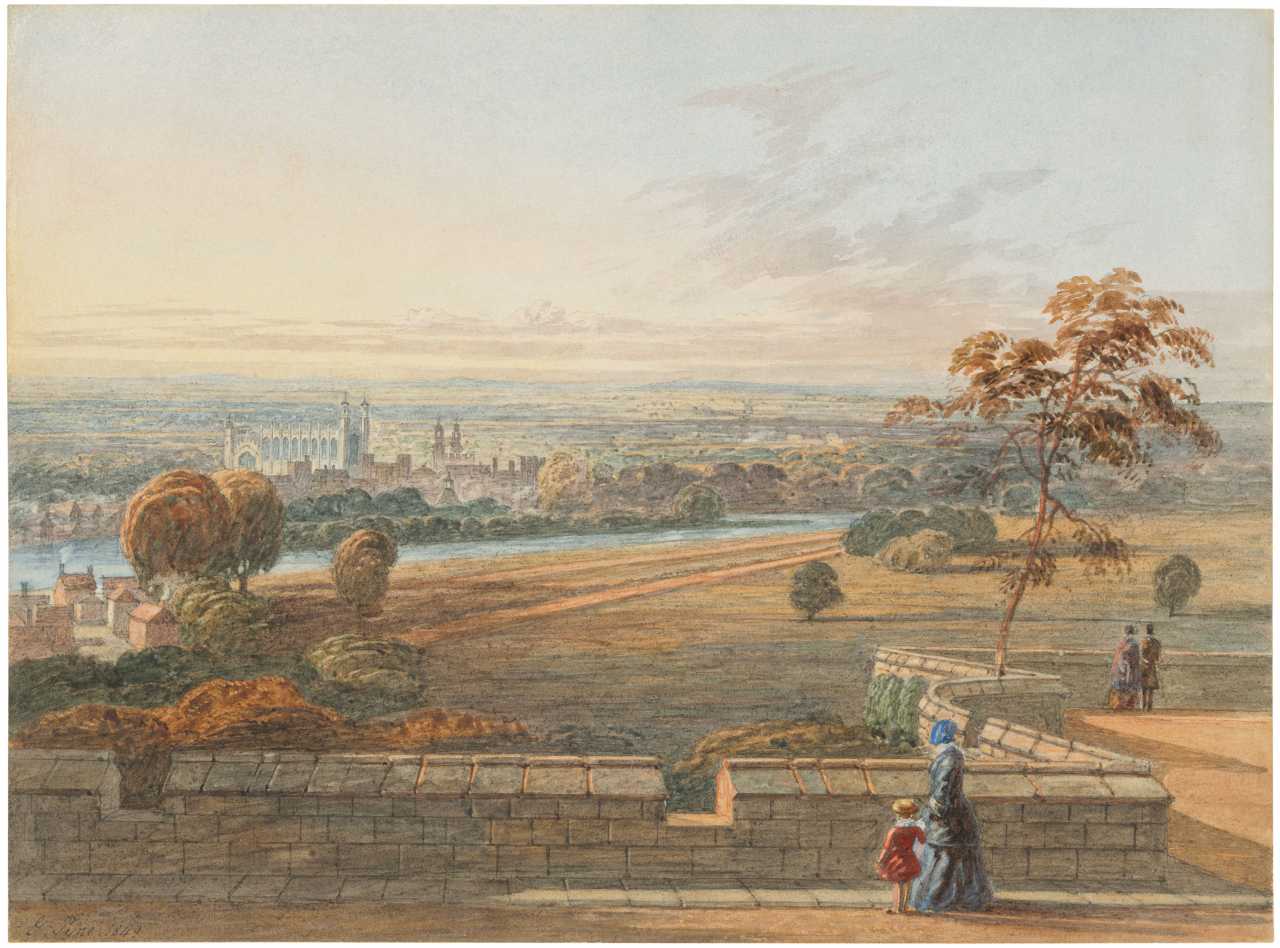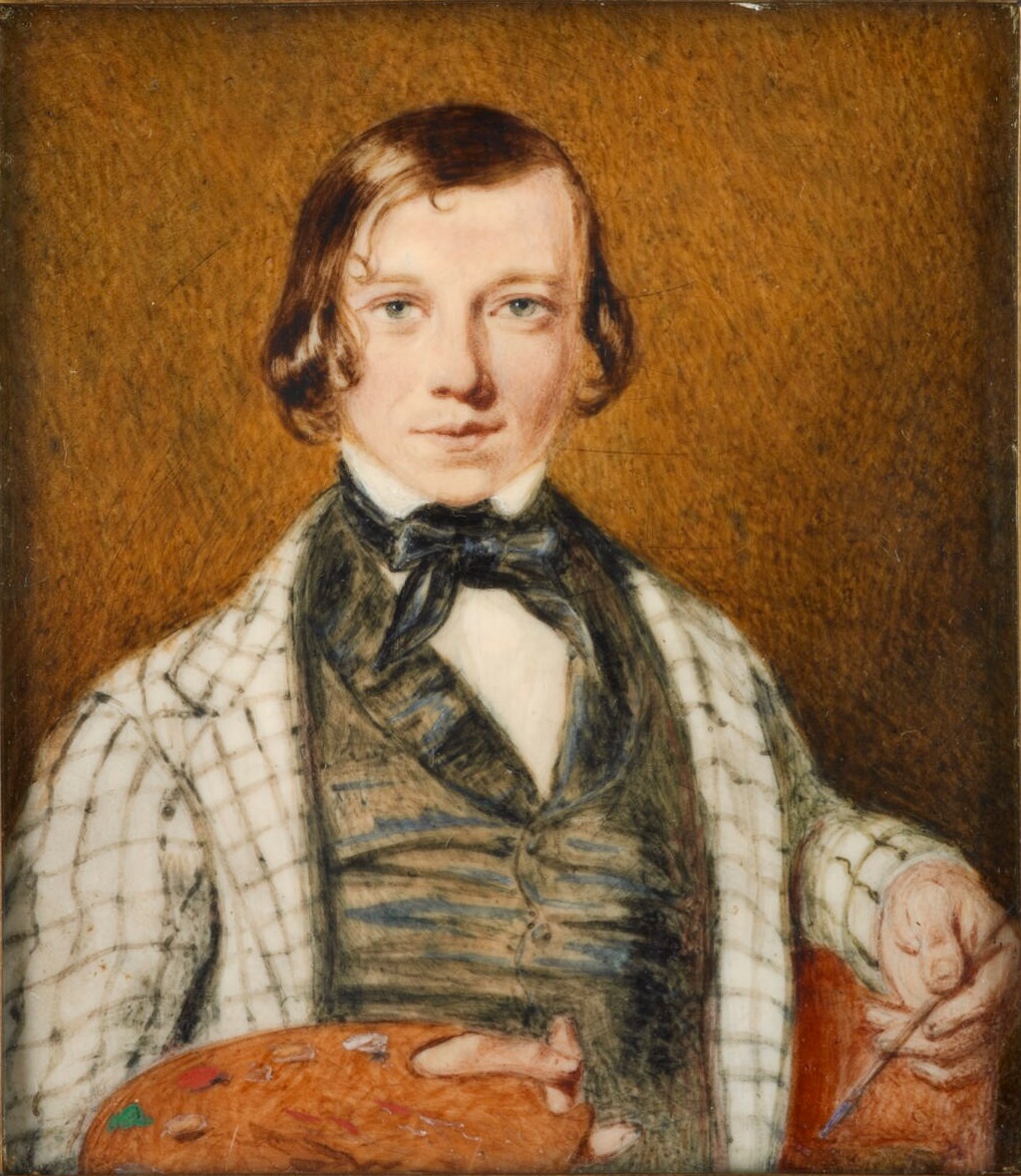
300 Years Of British Drawings
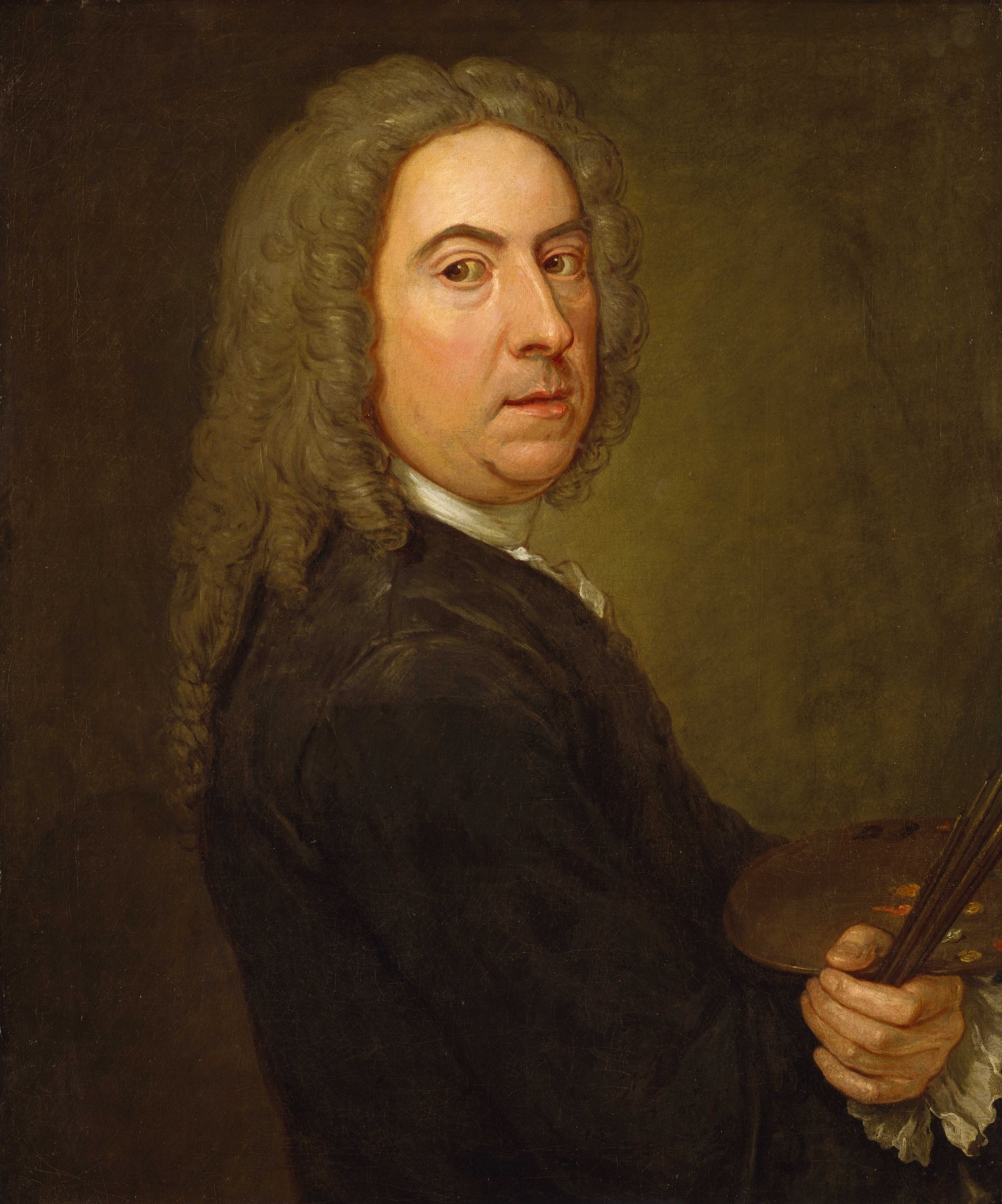
James Thornhill was an English painter of historical subjects working in the Italian baroque tradition. He was responsible for some large-scale schemes of murals, including the «Painted Hall» at the Royal Hospital, Greenwich, the paintings on the inside of the dome of St Paul's Cathedral, and works at Chatsworth House and Wimpole Hall.
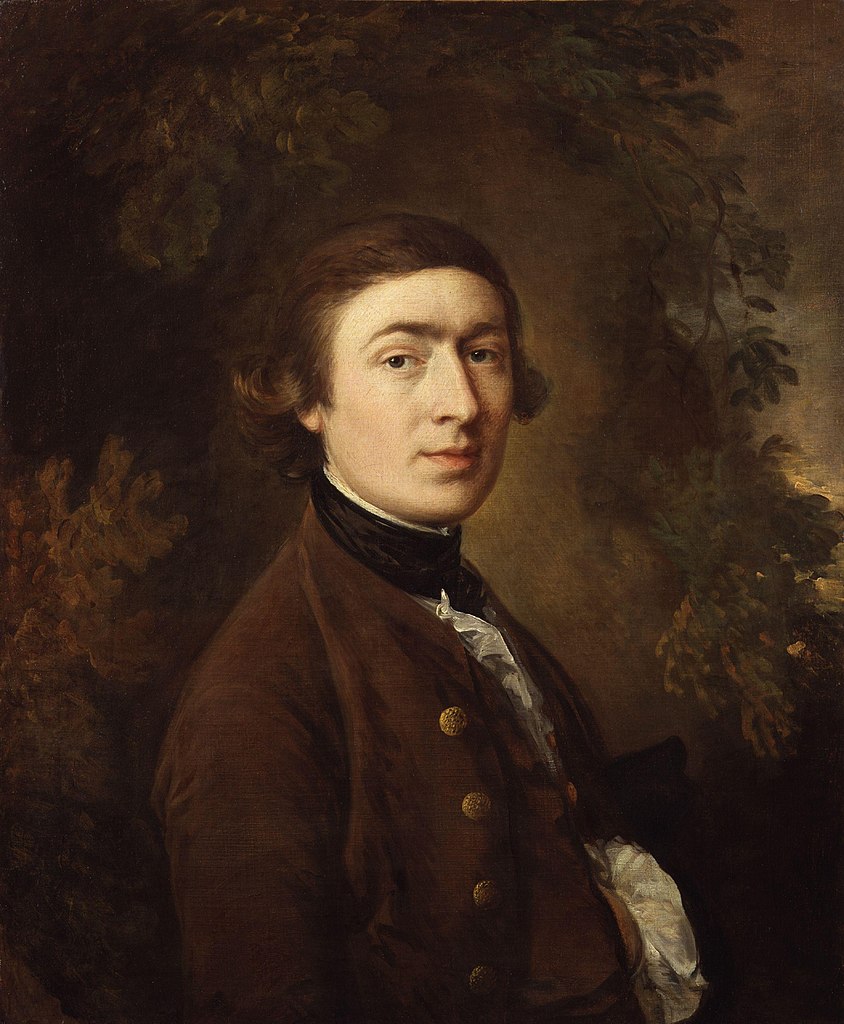
Thomas Gainsborough was an English painter, renowned for his mastery in both portraiture and landscape art, active during the 18th century. Born in Sudbury, Suffolk, Gainsborough displayed early artistic talent, which led him to London to study art seriously. He is often celebrated for his fluid and expressive brushwork and his innovative approach to portrait and landscape painting. Gainsborough was notably influenced by Dutch landscape paintings and the Rococo style, which is evident in his delicate and evocative use of color and light.
Thomas Gainsborough's career gained significant momentum when he moved to Bath, where he attracted a fashionable clientele. This period was marked by his creation of portraits that seamlessly integrated the sitters into lush, idyllic landscapes. Despite his success with portraits, Gainsborough preferred painting landscapes, often expressing a desire to escape the demands of portrait commissions to focus on these scenic representations.
Some of his most famous works include "The Blue Boy" and "Mr. and Mrs. Andrews." "The Blue Boy" is particularly noted for its vibrant blue costume and has been a hallmark of Gainsborough's style in capturing the personality and elegance of the youth. His works are held in high esteem and are part of collections across major museums globally, such as the National Gallery, Tate Britain, and the Huntington Library, to name a few.
For those interested in exploring Thomas Gainsborough's contributions to art, his paintings offer a glimpse into the social fabric and the natural beauty of 18th-century England, making him a pivotal figure in the English school of painting. His ability to convey character and atmosphere in his portraits and landscapes alike ensures his continued relevance and admiration in the art world today.
If you are keen on updates related to Thomas Gainsborough's art pieces, sales, and auctions, consider signing up for specialized newsletters or alerts that focus on his works and their presence in modern collections and sales events.
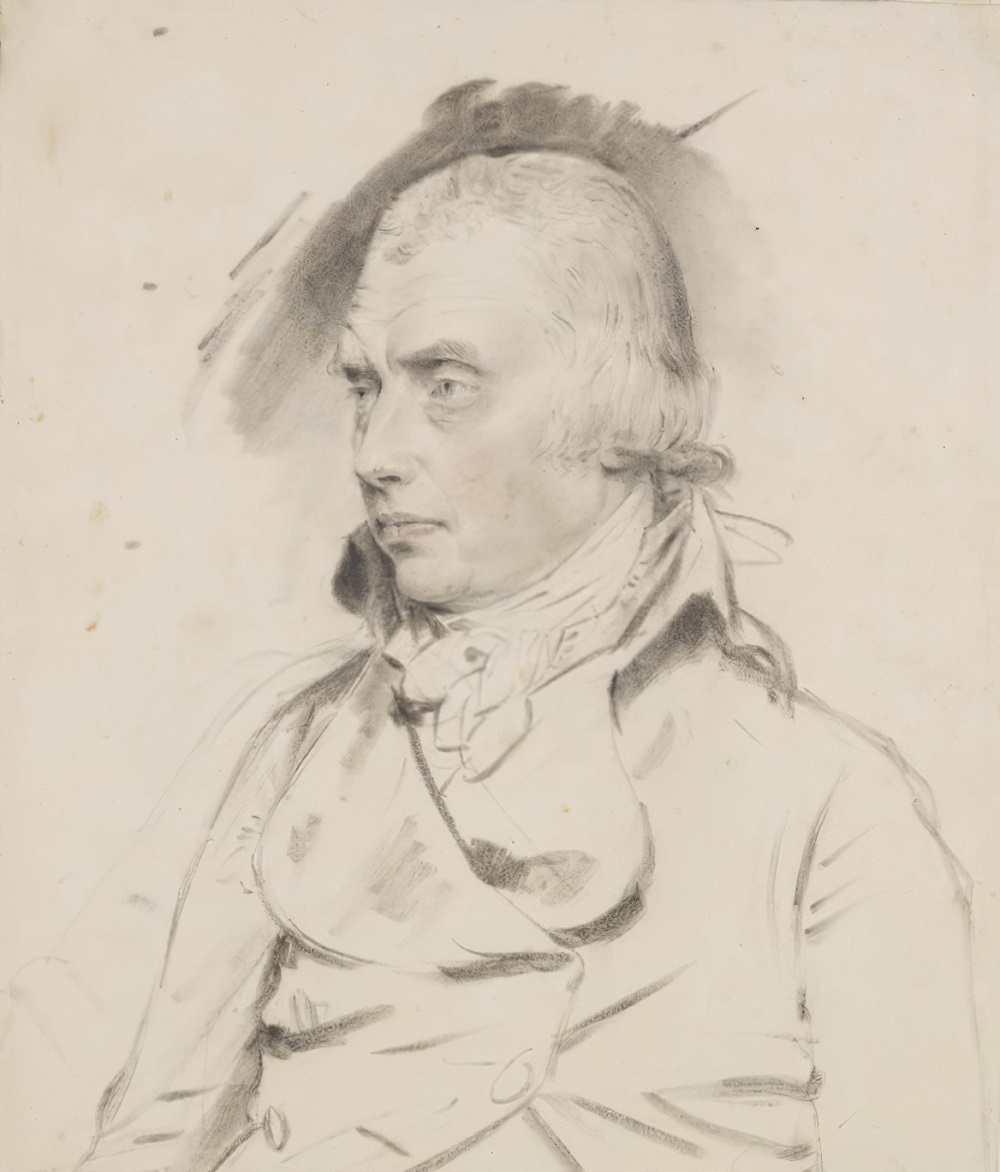
Francis Towne was a British watercolour painter of landscapes that range from the English Lake District to Naples and Rome. After a long period of obscurity, his work has been increasingly recognised from the early 20th century onwards.
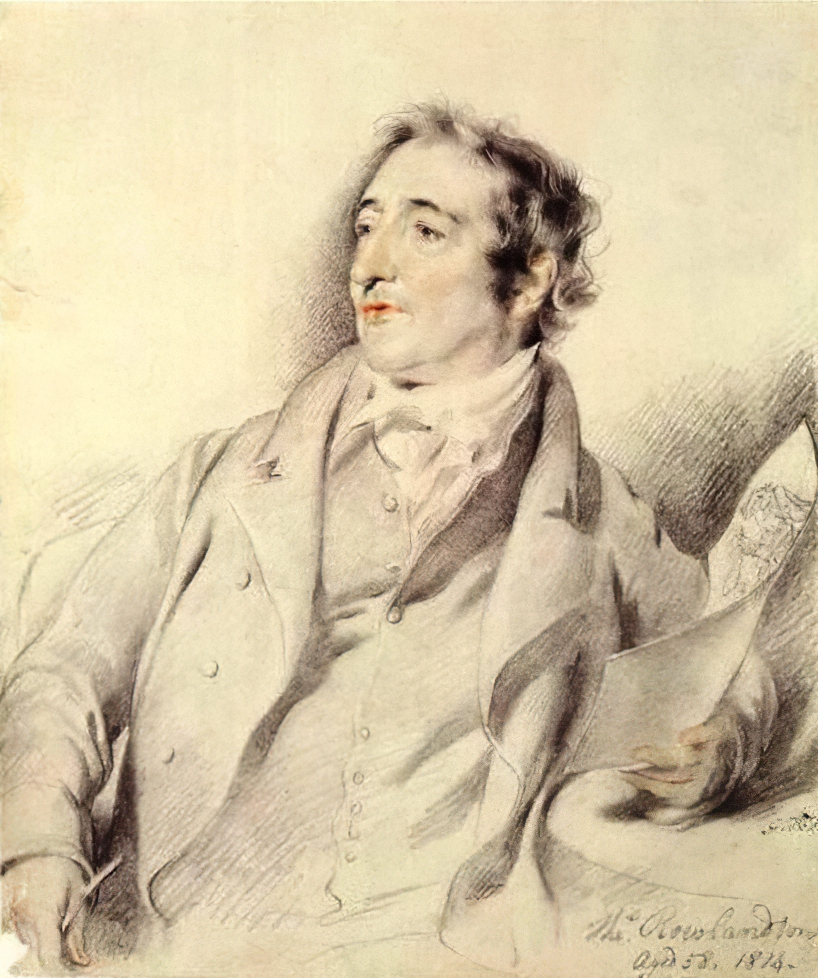
Thomas Rowlandson was an English artist and caricaturist of the Georgian Era, noted for his political satire and social observation. A prolific artist and printmaker, Rowlandson produced both individual social and political satires, as well as a large number of illustrations for novels, humorous books, and topographical works. Like other caricaturists of his age such as James Gillray, his caricatures are often robust or bawdy. Rowlandson also produced highly explicit erotica for a private clientele; this was never published publicly at the time and is now only found in a small number of collections. His caricatures included those of people in power such as the Duchess of Devonshire, William Pitt the Younger and Napoleon Bonaparte.
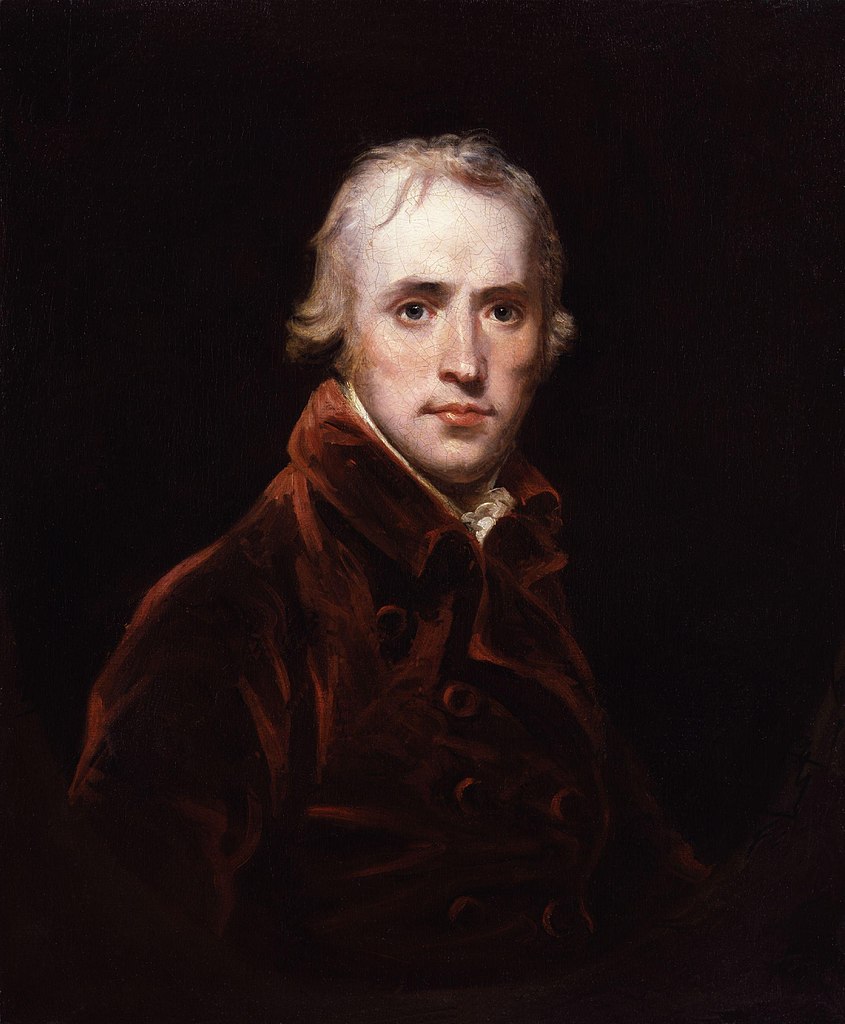
John Hoppner was a German-born British portrait painter, court painter to King George IV, and a Royal Academician.
He was successfully trained in art at the Royal Academy and throughout his life had the most fashionable and wealthy sitters. Hopner was particularly patronized by the Prince of Wales, the future King George IV of Great Britain, and rivaled the royal painter Thomas Lawrence.
In 1795, Hoppner was elected a Fellow of the Royal Academy of Arts.
John Hoppner is the author of portraits of many famous figures of British cultural and political life - Walter Scott, William Pitt the Younger, the Duke of Wellington, Admiral Nelson, Joseph Haydn and others.

Thomas Rowlandson was an English artist and caricaturist of the Georgian Era, noted for his political satire and social observation. A prolific artist and printmaker, Rowlandson produced both individual social and political satires, as well as a large number of illustrations for novels, humorous books, and topographical works. Like other caricaturists of his age such as James Gillray, his caricatures are often robust or bawdy. Rowlandson also produced highly explicit erotica for a private clientele; this was never published publicly at the time and is now only found in a small number of collections. His caricatures included those of people in power such as the Duchess of Devonshire, William Pitt the Younger and Napoleon Bonaparte.
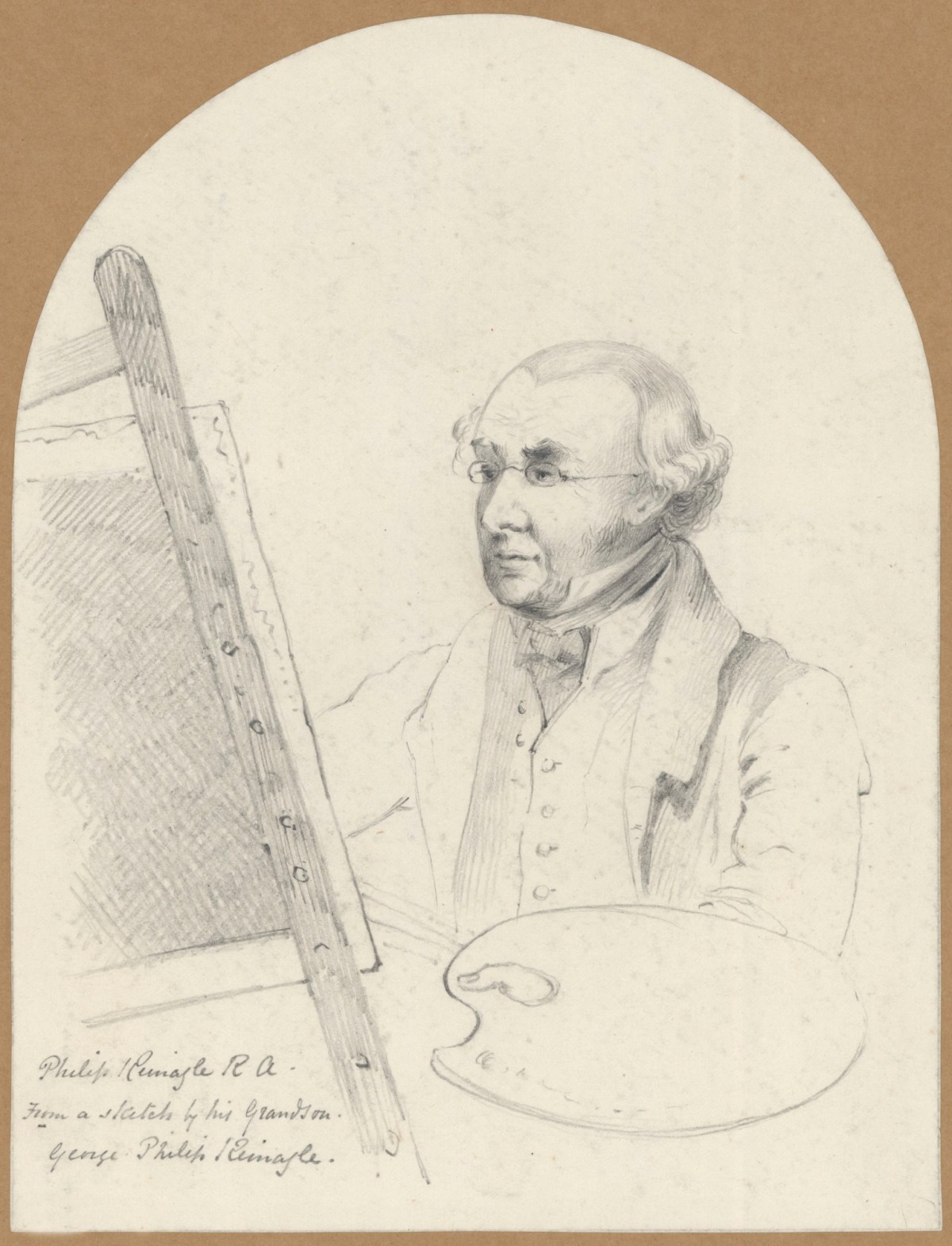
Philip Reinagle was a British painter and a member of the Royal Academy of Arts.
Reinagle trained in London at the Royal Academy and initially specialized in portraits of royalty and high nobility, but after ten years switched to animalistic and landscapes. He was particularly good at hunting scenes with dogs and horses. He also painted flowers and animals with the curiosity and precision of a naturalist. Because of these works, Reinagle was elected a member of the Royal Academy in 1787 and became a full member in 1812.
Philip Reinagle was also a skilled restorer and copyist and, along with his two daughters, Charlotte and Frances, earned money by copying famous paintings by the great masters. Incidentally, of all eleven of his children, four daughters and two sons became artists.

William Payne was an English painter and etcher who invented the tint Payne's grey.
Payne hit upon certain methods which considerably increased the resources of watercolour art, especially in the rendering of sunlight and atmosphere. His style, as it was called, was one which was not only new and effective, but could be learnt without much difficulty, and he soon became the most fashionable drawing-master in London.
Among the innovations with which he is credited were "splitting the brush to give forms of foliage, dragging the tints to give texture to his foregrounds, and taking out the forms of lights by wetting the surface and rubbing with bread and rag". He also abandoned the use of outline with the pen, but the invention by which he is best known is a neutral tint composed of indigo, raw sienna, and varnish.

Thomas Rowlandson was an English artist and caricaturist of the Georgian Era, noted for his political satire and social observation. A prolific artist and printmaker, Rowlandson produced both individual social and political satires, as well as a large number of illustrations for novels, humorous books, and topographical works. Like other caricaturists of his age such as James Gillray, his caricatures are often robust or bawdy. Rowlandson also produced highly explicit erotica for a private clientele; this was never published publicly at the time and is now only found in a small number of collections. His caricatures included those of people in power such as the Duchess of Devonshire, William Pitt the Younger and Napoleon Bonaparte.

William Payne was an English painter and etcher who invented the tint Payne's grey.
Payne hit upon certain methods which considerably increased the resources of watercolour art, especially in the rendering of sunlight and atmosphere. His style, as it was called, was one which was not only new and effective, but could be learnt without much difficulty, and he soon became the most fashionable drawing-master in London.
Among the innovations with which he is credited were "splitting the brush to give forms of foliage, dragging the tints to give texture to his foregrounds, and taking out the forms of lights by wetting the surface and rubbing with bread and rag". He also abandoned the use of outline with the pen, but the invention by which he is best known is a neutral tint composed of indigo, raw sienna, and varnish.

William Payne was an English painter and etcher who invented the tint Payne's grey.
Payne hit upon certain methods which considerably increased the resources of watercolour art, especially in the rendering of sunlight and atmosphere. His style, as it was called, was one which was not only new and effective, but could be learnt without much difficulty, and he soon became the most fashionable drawing-master in London.
Among the innovations with which he is credited were "splitting the brush to give forms of foliage, dragging the tints to give texture to his foregrounds, and taking out the forms of lights by wetting the surface and rubbing with bread and rag". He also abandoned the use of outline with the pen, but the invention by which he is best known is a neutral tint composed of indigo, raw sienna, and varnish.

Thomas Rowlandson was an English artist and caricaturist of the Georgian Era, noted for his political satire and social observation. A prolific artist and printmaker, Rowlandson produced both individual social and political satires, as well as a large number of illustrations for novels, humorous books, and topographical works. Like other caricaturists of his age such as James Gillray, his caricatures are often robust or bawdy. Rowlandson also produced highly explicit erotica for a private clientele; this was never published publicly at the time and is now only found in a small number of collections. His caricatures included those of people in power such as the Duchess of Devonshire, William Pitt the Younger and Napoleon Bonaparte.
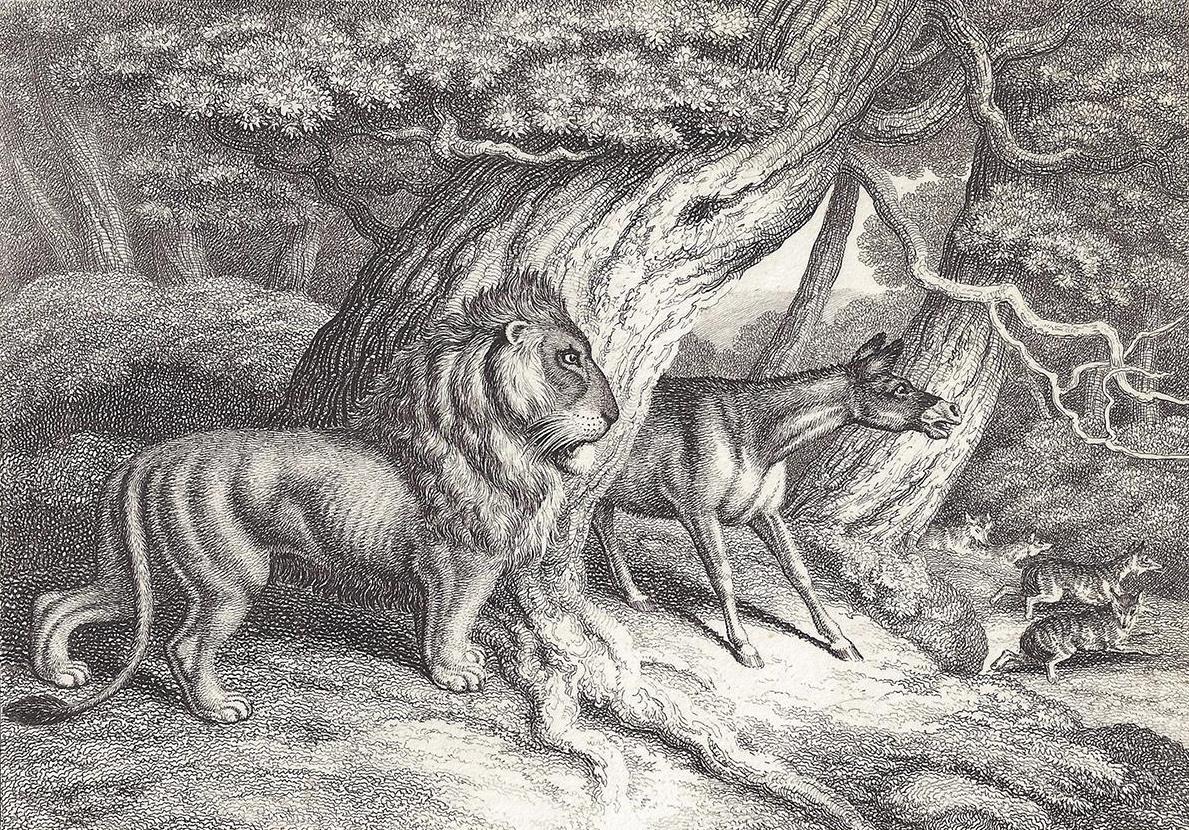
Samuel Howitt, full name William Samuel Howitt, was a British artist and illustrator.
Howitt was an amateur artist, but a very hardworking and talented one. For the most part, he painted hunting scenes, racing with horses, and depicted wild exotic animals in tropical landscapes. Howitt was also an engraver, creating many plates from his drawings, and a gifted illustrator, decorating several hunting and sporting books and fables with his drawings.

William Payne was an English painter and etcher who invented the tint Payne's grey.
Payne hit upon certain methods which considerably increased the resources of watercolour art, especially in the rendering of sunlight and atmosphere. His style, as it was called, was one which was not only new and effective, but could be learnt without much difficulty, and he soon became the most fashionable drawing-master in London.
Among the innovations with which he is credited were "splitting the brush to give forms of foliage, dragging the tints to give texture to his foregrounds, and taking out the forms of lights by wetting the surface and rubbing with bread and rag". He also abandoned the use of outline with the pen, but the invention by which he is best known is a neutral tint composed of indigo, raw sienna, and varnish.

Thomas Rowlandson was an English artist and caricaturist of the Georgian Era, noted for his political satire and social observation. A prolific artist and printmaker, Rowlandson produced both individual social and political satires, as well as a large number of illustrations for novels, humorous books, and topographical works. Like other caricaturists of his age such as James Gillray, his caricatures are often robust or bawdy. Rowlandson also produced highly explicit erotica for a private clientele; this was never published publicly at the time and is now only found in a small number of collections. His caricatures included those of people in power such as the Duchess of Devonshire, William Pitt the Younger and Napoleon Bonaparte.
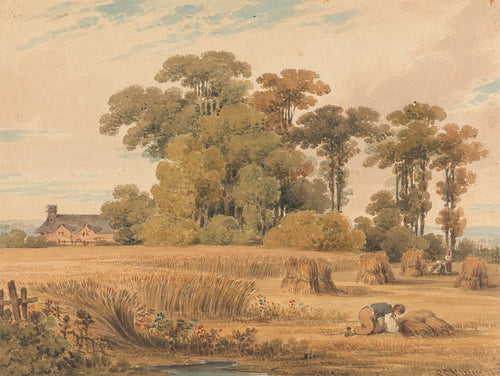
Paul Sandby Munn was an esteemed English watercolor painter, celebrated for his atmospheric landscapes of England and Wales, as well as for his pioneering efforts in early lithography. Born in Greenwich, Munn was influenced and initially tutored by his godfather, the renowned Paul Sandby, from whom he also inherited his name. Throughout his career, Munn exhibited a delicate and careful execution in his artworks, embodying the early watercolor style that emphasized pale and soft color palettes.
Paul Sandby Munn’s artistic contributions were frequently showcased at the Royal Academy from 1799, and he was an active member of the Society of Painters in Water Colours from its early days. His works often stemmed from sketches made during tours with his contemporary John Sell Cotman, capturing the essence of the British landscape which was a source of national pride during his time. His notable works include scenes such as the "Shanklin Chine, Isle of Wight" and are preserved in several prominent collections including the British Museum and the Tate.
In addition to his art, Paul Sandby Munn had a keen interest in music, which later in life became his primary focus. His works can still be seen in institutions like The Courtauld Gallery and the V&A, offering a glimpse into the rich history of British watercolor painting and its evolution during the 19th century.
For those interested in exploring Munn's works further, pieces like "Old Water Mill" from 1807, held by The Metropolitan Museum of Art, exemplify his style and contributions to the polyautography technique, a form of early lithography.
If you are keen to explore further or wish to stay updated on new auctions and sales events featuring the exceptional works of Paul Sandby Munn, we invite you to sign up for our exclusive updates. This subscription will ensure you receive timely information tailored to enthusiasts and collectors of historic art and antiques.
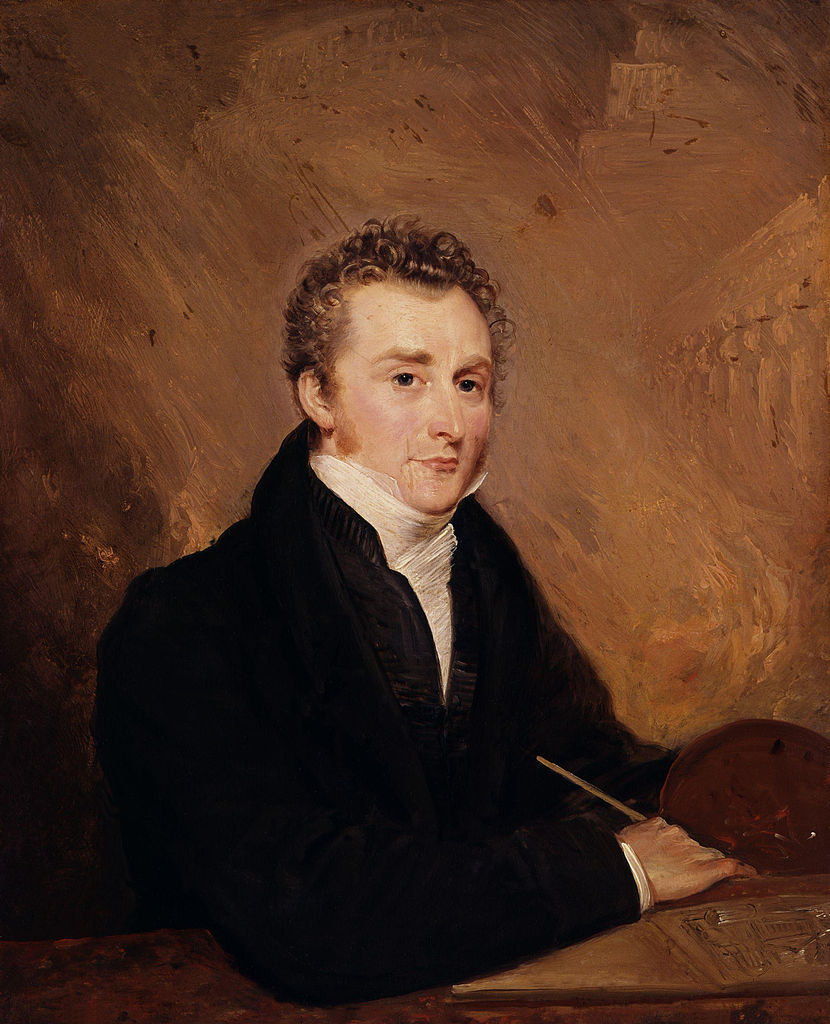
John Martin was a British painter, printmaker and illustrator.
Martin is known for his large-scale paintings of historical and religious subjects, as well as dioramas, which were very successful. John Martin was also a mezzotint engraver and among other things illustrated John Milton's Paradise Lost.
John Martin was hugely popular in Europe and influenced many artists. His fantastic architecture and magical, powerful landscapes boggled the mind and stirred the imagination. The French Romantic movement in both art and literature was inspired by it. Even when building railroad bridges in England, architects were inspired by Martin's works.

Thomas Rowlandson was an English artist and caricaturist of the Georgian Era, noted for his political satire and social observation. A prolific artist and printmaker, Rowlandson produced both individual social and political satires, as well as a large number of illustrations for novels, humorous books, and topographical works. Like other caricaturists of his age such as James Gillray, his caricatures are often robust or bawdy. Rowlandson also produced highly explicit erotica for a private clientele; this was never published publicly at the time and is now only found in a small number of collections. His caricatures included those of people in power such as the Duchess of Devonshire, William Pitt the Younger and Napoleon Bonaparte.

Thomas Rowlandson was an English artist and caricaturist of the Georgian Era, noted for his political satire and social observation. A prolific artist and printmaker, Rowlandson produced both individual social and political satires, as well as a large number of illustrations for novels, humorous books, and topographical works. Like other caricaturists of his age such as James Gillray, his caricatures are often robust or bawdy. Rowlandson also produced highly explicit erotica for a private clientele; this was never published publicly at the time and is now only found in a small number of collections. His caricatures included those of people in power such as the Duchess of Devonshire, William Pitt the Younger and Napoleon Bonaparte.














